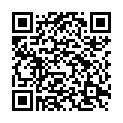|
|
|
| Module code: DFMME-2b3 |
|
|
4V+2PA (6 hours per week) |
|
8 |
| Semester: 2 |
| Mandatory course: yes |
Language of instruction:
German |
Assessment:
Project with documentation and final presentation, preferably in a team.
Subproject “Product Development”: The team develops its own specifications (“guidelines”) for the project and defines its goals in concrete and measurable terms. The goals must be ambitious. A distinction must be made between project goals and individual goals.
Fifteen-minute presentations must be prepared for each of the individual goals. These should be informative and interactive and demonstrate that the individual goals have been achieved to a demanding level of depth.
Documentation must be prepared for the project. It must concisely present the result based on your own objectives from the specifications. It must be clear how the project objectives were achieved and realized. The documentation must be submitted in WORD in full-screen landscape format and must meet the usual requirements for technical and scientific documentation.
Subproject “Material Selection": Further details will be provided by the lecturer.
Subproject “Safety Engineering": Further details will be provided by the lecturer.
[updated 02.12.2025]
|
DFMME-2b3 (P610-0452) Mechanical Engineering, Master, ASPO 01.10.2024
, semester 2, mandatory course, Specialization Product Development
MAM_19_PE_2.06.PEW (P241-0067) Engineering and Management, Master, ASPO 01.10.2019
, semester 2, mandatory course, Specialization Product Development
MAM_24_PE_2.06.PEW Engineering and Management, Master, SO 01.10.2024
, semester 2, mandatory course, Specialization Product Development
|
90 class hours (= 67.5 clock hours) over a 15-week period.
The total student study time is 240 hours (equivalent to 8 ECTS credits).
There are therefore 172.5 hours available for class preparation and follow-up work and exam preparation.
|
Recommended prerequisites (modules):
None.
|
Recommended as prerequisite for:
|
Module coordinator:
Prof. Dr. Bernd Heidemann |
Lecturer: Prof. Dr. Bernd Heidemann
[updated 08.07.2019]
|
Learning outcomes:
After successfully completing this module, students will be familiar with new material concepts, their technological properties and development potential and will be able to develop and use them.
They will be able to implement product functions with these properties by applying specific design methods.
Students will be able to analyze and optimize their product in terms of safety.
They will be able to assess whether a product falls under the Machinery Directive and determine its hazards.
Students will be able to classify safety engineering terms in the overall context of the Machinery Directive.
They will be able to apply the Machinery Directive and know the scope of a conformity procedure.
They will be familiar with the 3-step method for reducing hazards and will be able to select or develop measures to reduce hazards.
Student will be able to carry out a risk assessment of simple machines and products using harmonized standards.
They will be familiar with the Sistema calculation and can interpret an existing calculation.
[updated 02.12.2025]
|
Module content:
Material concept “Plastics”:
technological properties, design and production relevant properties, ecological properties, sustainability.
Selecting materials:
Integration of databases for plastics and metallic and ceramic materials in product development and calculation.
Material concepts created in additive manufacturing processes: technological properties, design and production relevant properties, ecological properties, sustainability.
Material concept - “Other materials" (fibre composites, graphene, current developments in materials technology):
technological properties, design and production relevant properties, ecological properties, sustainability.
Product development and component design with regard to material-specific properties: The principles of “integral design methods and the integration of functions” versus “differential design methods and the separation of functions”. Further details according to project-specific specifications, see above.
Explanation of terms and delimitations pertaining to product safety and the Machinery Directive.
Legal foundation of the Machinery Directive
Types of hazards
The 3-step method of risk reduction
Risk assessment procedure (risk assessment, evaluation and risk reduction)
The importance of harmonized standards and their application
Documenting a risk assessment
Examples of inherently safe product design
Protective devices: mechanical, control, organizational
Basics of Sistema calculation
[updated 02.12.2025]
|
Teaching methods/Media:
Seminaristic, interactive instruction.
Project work preferably in a team, preferably consisting of two members, in order to utilize and master group dynamic processes and procedures.
[updated 02.12.2025]
|
Recommended or required reading:
Gunter Erhard: Konstruieren mit Kunststoffen. Hanser-Verlag.
Gottfried Wilhelm Ehrenstein Mit Kunststoffen konstruieren: Eine Einführung. Hanser-Verlag.
Schürmann, Helmut: Konstruieren mit Faser-Kunststoff-Verbunden. Springer-Verlag.
Kurt Moser: Faser-Kunststoff-Verbund. Entwurfs- und Berechnungsgrundlagen. Springer-Verlag.
Andreas Gebhardt: Generative Fertigungsverfahren: Additive Manufacturing und 3D Drucken für Prototyping - Tooling – Produktion. Hanser-Verlag.
Ian Gibson, David Rosen, Brent Stucker: Additive Manufacturing Technologies: 3D Printing, Rapid Prototyping, and Direct Digital Manufacturing. Springer-Verlag.
John O. Milewski: Additive Manufacturing of Metals: From Fundamental Technology to Ro-cket Nozzles, Medical Implants, and Custom Jewelry. Springer-Verlag.
Tarek I. Zohdi: Modeling and Simulation of Functionalized Materials for Additive Manufac-turing and 3D Printing: Continuous and Discrete Media. Springer-Verlag.
Gries, Thomas, Klopp, Kai (Hrsg.): Füge- und Oberflächentechnologien für Textilien - Verfahren und Anwendungen. Springer-Verlag.
Safety engineering:
Alfred Neudörfer: Konstruieren sicherheitsgerechter Produkte. Springer Berlin Heidelberg.
Marco Einhaus, Florian Lugauer, Christina Häußinger: Arbeitsschutz und Sicherheitstechnik. Hanser Verlag.
Maschinenrichtlinie Richtlinie 2006/42/EG
Volker Krey, Arun Kapoor: Praxisleitfaden Produktsicherheitsrecht. Hanser Verlag.
Bernd Bertsche, Gisbert Lechner: Zuverlässigkeit im Fahrzeug und Maschinenbau. Springer Verlag.
[updated 02.12.2025]
|

